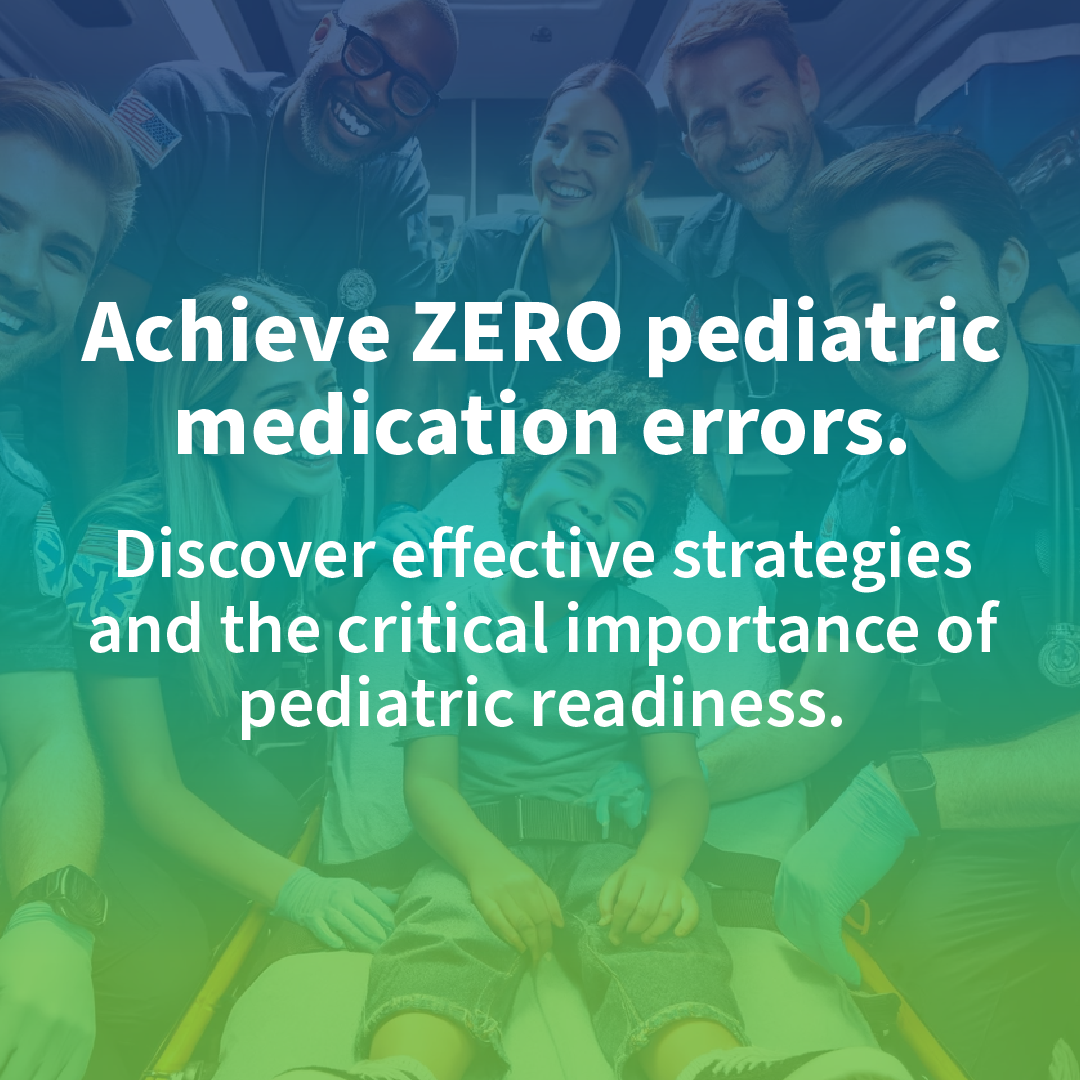Embracing the Pediatric Readiness Mindset

Monroe-Livingston Regional EMS (MLREMS) in New York found a 30% medication error rate for pediatric patients between 2020-2022, including 37% for Midazolam and 49% for fentanyl. How did they know this? They deliberately undertook a regional quality improvement project to reduce pediatric medication errors and enhance safety for pediatric patients.
Error rates like these are not out of the norm; in fact, they are consistent with published papers and highlighted in the NAEMSP’s recent position paper on Pediatric Medication Safety.
Hospitals have similar issues, highlighted by The Wall Street Journal’s October 2023 exposé, which revealed that only 14% of US hospitals were “Pediatric ready.” This lack of preparedness led to 1,440 children dying unnecessarily because the emergency departments that treated them weren’t well prepared. This underscores the importance of our EMS-focused assessment to identify and close care gaps.
On May 1st, the Pre-hospital Pediatric Readiness Project (PPRP) assessment was released. Though it’s only a survey, it will help you think more broadly about pediatric care in your agency, moving beyond the outdated 2-year training model.
When the assessment results are out and compared with published outcomes, it will undoubtedly show that EMS agencies prioritizing comprehensive training, structured CQI processes, and effective feedback mechanisms will have better outcomes in areas such as seizures, asthma, and cardiac arrest. These high-performing agencies will also see fewer medication errors and will inspire a workforce to be more confident in handling pediatric calls. Recognizing this, I met with my leadership team to review and discuss the PPRP in detail.
We meticulously reviewed the assessment, sparking in-depth discussions and highlighting areas for improvement. Reading the questions, it became clear that training on pediatrics once every two years simply isn’t enough—you wouldn’t expect to improve at golf with one lesson every two years, and the same applies to pediatric EMS training. Fortunately, we addressed this gap years ago when I became the medical director. Now if only my golf game could improve just the same!
The PPRP assessment makes it clear that EMS organizations should schedule ongoing, integrated training. Move beyond the q2 year approach by decentralizing training, using tabletop exercises, conducting case reviews, and simulation when appropriate. Training for pediatric and adult care together is a must in EMS, because even though pediatric care has its nuances, the fundamentals of quality and confidence should be consistent. A seizure in a 2-year-old isn’t vastly different from one in a 22-year-old, and a 5-year-old’s cardiac arrest should mirror the response for a 55-year-old. We’ve even removed the pediatric section from our protocols to emphasize this point, and now we ‘treat kids like adults,’ with the same skills and confidence these little lives deserve.
Once you make these structural changes and establish a good training rhythm, consider the Plan-Do-Check-Act (PDCA) cycle to systematically address gaps. This approach explains how Maia Dorsett, MD, PhD, and Shane O’Donnell, NRP, FP-C, C-NPT improved outcomes at MLREMS. Handtevy training began in June of 2023, and their large 12 agency system went from a 37% error rate for Midazolam down to 0%. In fact, they haven’t recorded a benzodiazepine error since July. These phenomenal results highlight their efforts to transform care in their region and serve as an excellent example of implementing a new process and evaluating its efficacy.
Pediatric readiness is fundamentally a mindset. Commit to treating adults and kids with the same winning attitude. Keep up the great work you are doing, and thank you for leading the charge in ensuring your EMS organization is truly pediatric ready.
Ready to Try Handtevy Mobile?
Schedule a Demo

Peter Antevy, MD
DISCLAIMER:Pediatric Emergency Standards Inc. does not make clinical or medical decisions. The Handtevy System is intended to be utilized as a guide only. Provider’s experience and training should be the final determinant of clinical treatment decisions.

